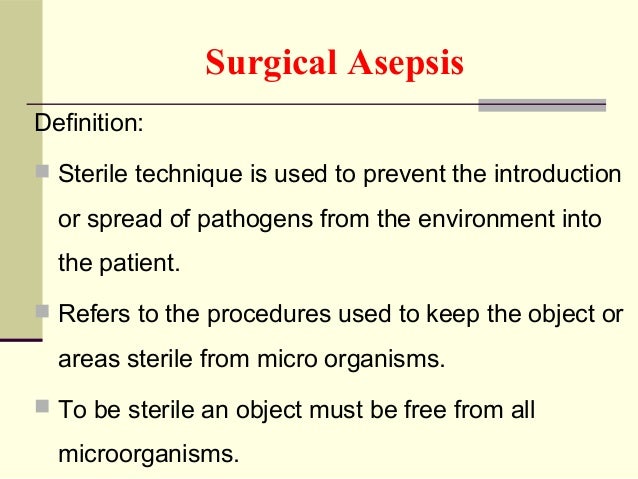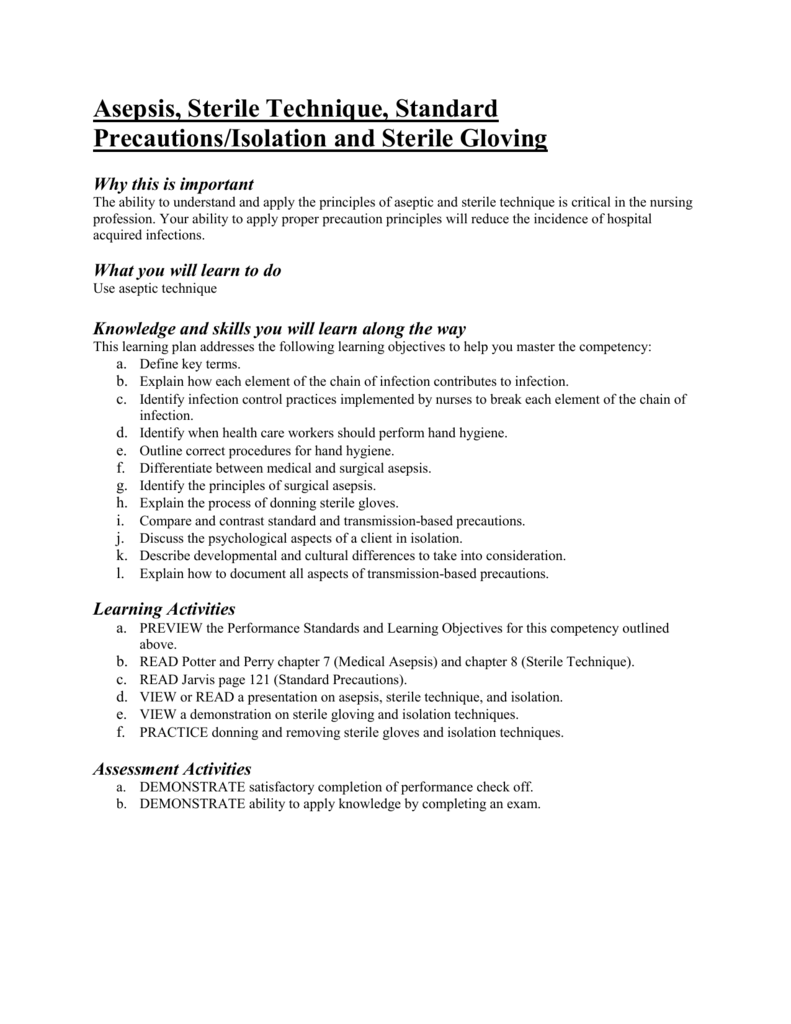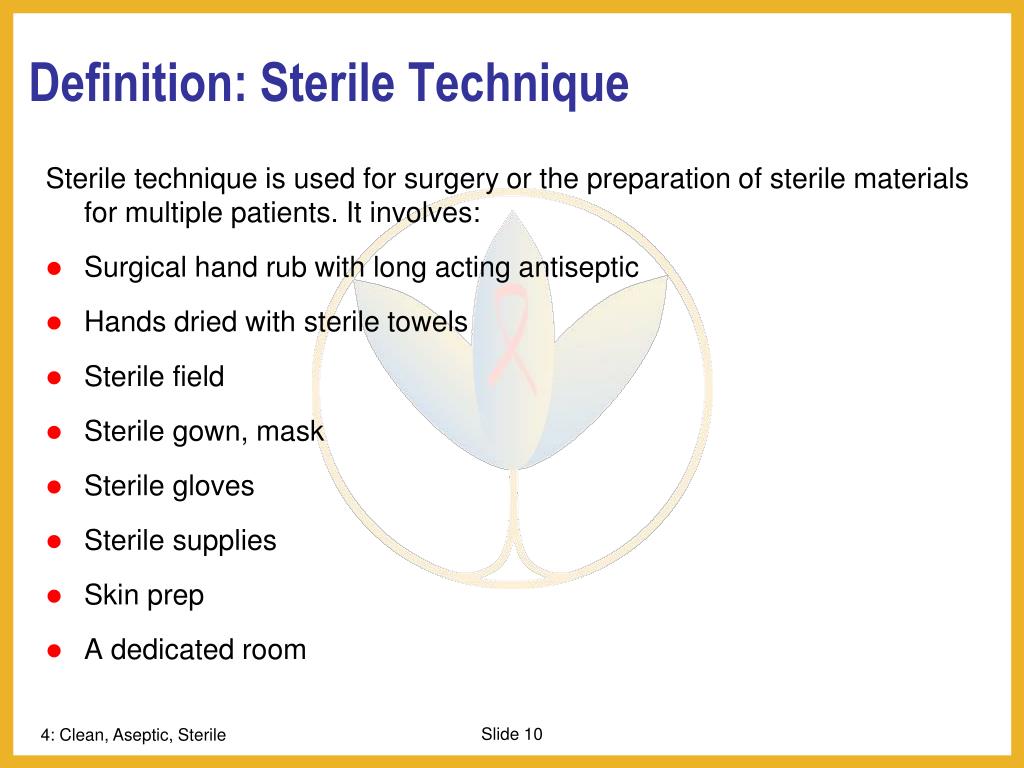

Medical asepsis is often referred to as clean which is more than sanitary. Medical asepsis is defined as the absence of disease-causing microorganisms.The two types of asepsis are medical asepsis and surgical asepsis. Asepsis is defined as not septic, that is, asepsis is the absence of disease-causing organisms.Standard precautions protect health care workers and patients from the spread of infection secondary to contaminated blood and other bodily fluids. Standard precautions are measures that are used to prevent the spread of infection among all patients whether or not they have a known infection.Examples include contact and airborne precautions. Transmission based precautions are based on the pathogens mode of transmission. Transmission based precautions are special measures that are put in place to prevent the spread of infection.Vector-borne transmission is defined as the transmission of a pathogen from an animal or insect to a human being.Contact precautions are indicated in the presence of a pathogen that is transmitted via contact transmission. Indirect contact transmission is sometimes referred to as vehicle-borne transmission. Contact transmission is defined as the mode or means with which a microorganism is moved and transmitted via direct or indirect contact with the infected person or an object that has been contaminated with the pathogen, respectively.

Airborne precautions are indicated in the presence of a pathogen that is transmitted via the airborne mode of transmission. These infections are found in droplets and dust in the air. Airborne transmission is defined as the mode or means with which a microorganism is moved and transmitted via air and inhaled into the respiratory tract by the susceptible host.The chain of infection includes the infectious microorganism, the reservoir or location where the pathogen lives, the port of exit from the reservoir, the mode of transmission from the reservoir, the portal of entry into the person, or host.Read more about cleaning, disinfection, and sterilization. Some of the commonly used terms and terminology associated with infection control include those relating to the chain of infection, the modes of transmission of infectious microorganisms, asepsis, types of infection, and personal protective equipment. Evaluate whether the aseptic technique is performed correctly.Evaluate infection control precautions implemented by staff members.Utilize appropriate precautions for immunocompromised clients.Educate client and staff regarding infection control measures.Follow correct policy and procedures when reporting a client with a communicable disease.Use an appropriate technique to set up a sterile field/maintain asepsis (e.g., gloves, mask, sterile supplies).Apply principles of infection control (e.g., hand hygiene, surgical asepsis, isolation, sterile technique, universal/standard precautions).Understand communicable diseases and the modes of organism transmission (e.g., airborne, droplet, contact).

Assess client care area for sources of infection.cannot sterilize instruments that have long, narrow lumina.In this section of the NCLEX-RN examination, you will be expected to demonstrate your knowledge and skills standard precautions, transmission-based, and surgical asepsis in order to: effectively kills both microorganisms and spores No toxic fumes, byproducts or residues and no handling of chemicals

safer method of sterilizing heat and moisture safe items.


 0 kommentar(er)
0 kommentar(er)
